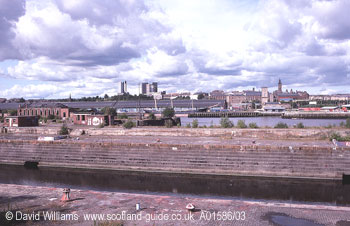But times - and fortunes - change. At the turn of the twentieth century British industry and commerce were losing out to their rivals and in 1908 The Times reported that over 16,000 people in Govan were on the verge of starvation. Various radical and left wing organisations grew in strength during this period and leaders such as John Maclean drew huge crowds to rallies and demonstrations. The First World War eased some problems, exacerbated others and created new ones. There were fights against rent rises and various strikes took place in big engineering factories such as Albion Motors and Beardmore`s and these gave rise to the working-class leaders known as the `Red Clydesiders` and influential organisations such as the Clyde Workers` Committee. Social unrest continued after the war, with one of the most serious events being `Black Friday` (31 January 1919) when troops were brought onto the streets after a huge demonstration.
The shipbuilding
industry had been expanded rapidly during the war and this led to post
war overcapacity and subsequent closures of some of the yards. This had
a knock-on effect and by 1922 there were 80,000 people unemployed in the
city. The anger and frustration at this senseless waste of people`s skills
was reflected in the results of the 1922 General Election when ten of
the city`s fifteen parliamentary seats were won by the Independent Labour
Party. Many of the hopes raised by election of these MPs were dashed,
though there were some improvements in the quality of life, but the Glasgow
economy continued to decline and it reached another crisis in the Depression
of the 1930s. However, with the prospect of another war looming on the
horizon, the city`s economy began to pick up in the late 1930s, and as
well as local yards getting extra orders for naval ships, the Rolls-Royce
aeroplane engine factory was built in Hillington. During the war the city
was a target for enemy bombers, though it was the nearby town of Clydebank
which took the brunt of the death and destruction, and relatively few
Glasgow buildings or factories were damaged. One notable exception was
Alexander Thomson`s Queen`s Park Church.
This article is based on the guidebook "The Glasgow Guide".
